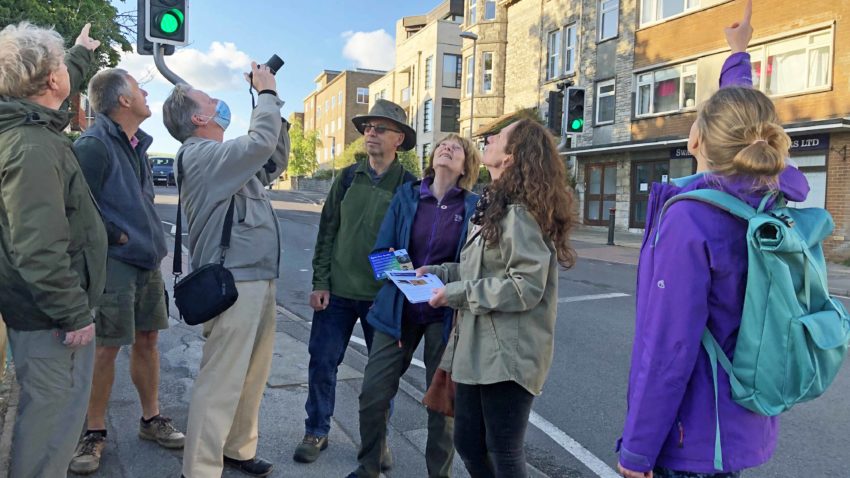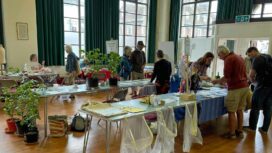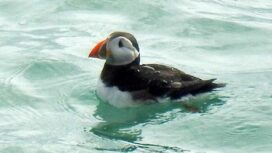The newly formed Swanage branch of the Swift Conservation group is urging others to join in their effort to halt the dramatic decline in the number of swifts in the town.
There’s been a 53 percent decline in the population of swifts in the South East of England in the last 12 years alone, which has been attributed to homeowners blocking up holes in the eaves and installing plastic soffit boards. This has unintentionally destroyed the ideal place for swifts to nest.
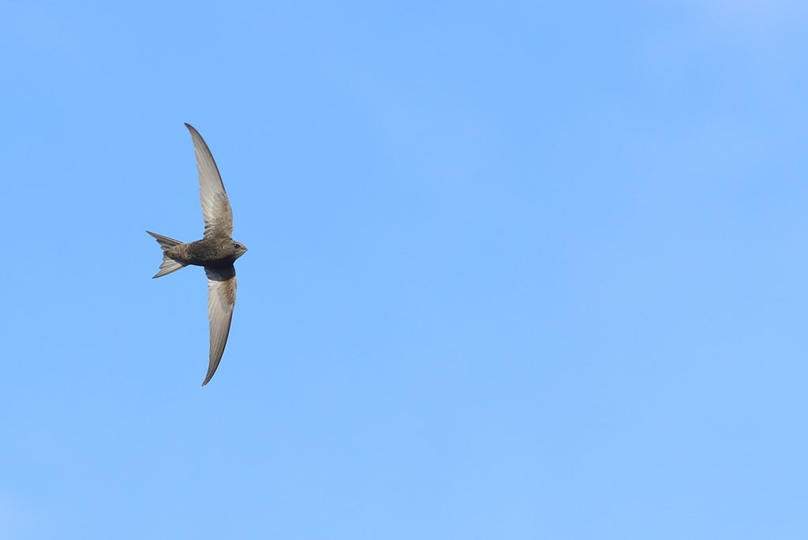
The distinctive shape of a swift in the sky
There used to be hundreds of nests in Swanage
Swanage has plenty of Victorian buildings that are suitable for swifts to build their nests and in the past there were hundreds but in 2021 only about 15 to 20 sites were identified.
Swifts are valued for their aerial acrobatics and their distinctive scream, as well as keeping in check the number of insects – their main food source.
Now that they have returned to Swanage for the summer, the group is organising swift walking tours in the town to highlight the issue and to help people identify the birds circling in the sky.
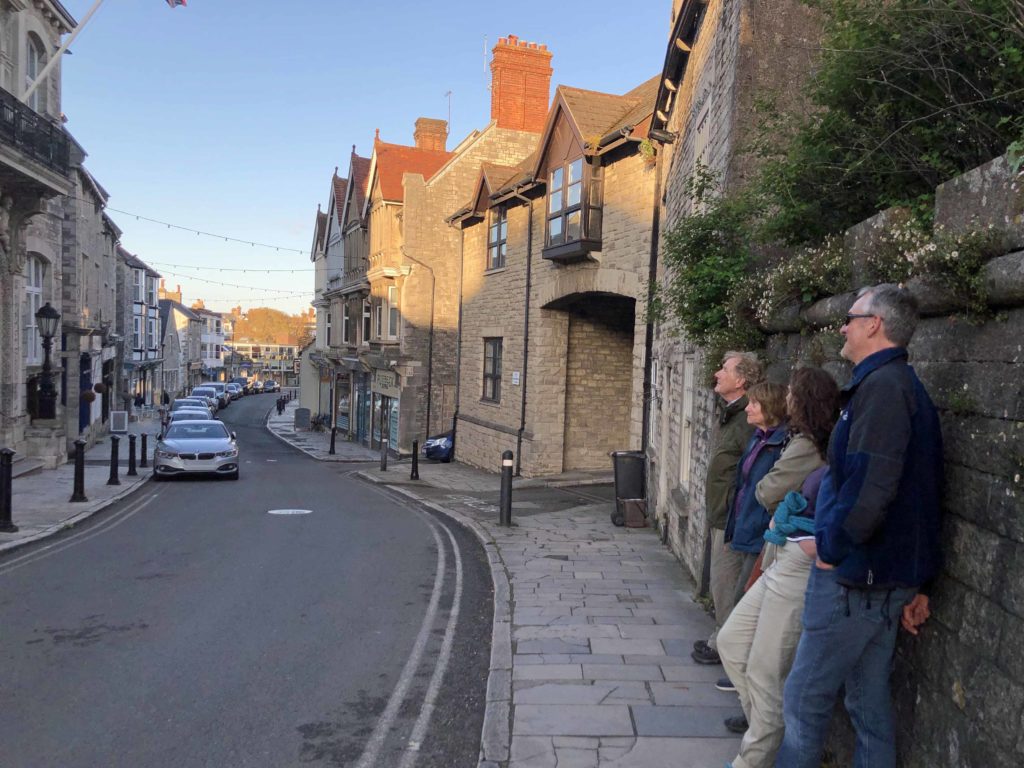
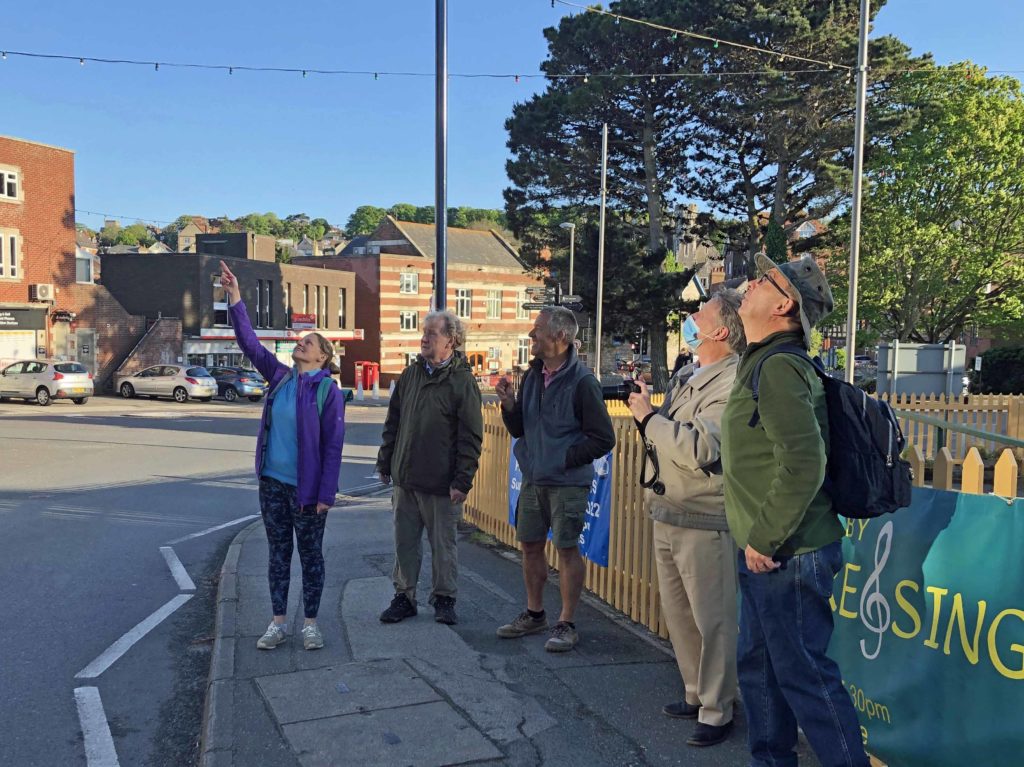
The town hall and the railway station are two places where the group have spotted swifts this year
Swanage swift hot spots
There are two swift hot spots in Swanage – the first is at the top of Station Road near the railway station and the second is by Swanage Town Hall in the High Street. They can also be spotted in the Park Road, Taunton Road and Stafford Road area.
Typically, swifts arrive along the South Coast of England from Africa in May to nest and then stay until August. They are best spotted at dusk as they circle lower before swooping down to their nests for the night.

Ginny Carvisiglia (left) organises swift walks in Swanage and hands out information about the birds for anyone who’s interested
“Last year, there were very low numbers”
Ginny Carvisiglia who started the Swanage Swift Conservation group, said:
“I got interested in swifts when I lived in London and had them living in my loft and I’ve studied them ever since.
“When I moved to Swanage several years ago, I continued the interest and would look out for them every year. For the last three years I’ve been keeping a note of the number of nests and then last year I started the group, supported by Sustainable Swanage.
“When we’ve been out on a swift walk, people have stopped to ask what we are doing, and then joined us and it’s grown from there.
“As well as the walks, we do a survey once a week. We each have our own patch and we watch for swifts going into eaves. If it’s two or three times, it’s probably a nest and we mark it down.
“We also attempt to do a count of the numbers in the air to get an average of the number in the local population.
“Last year, there were very low numbers with only about 15 to 20 nests throughout the season in Swanage but already this year we’ve spotted about 15, which is promising.”
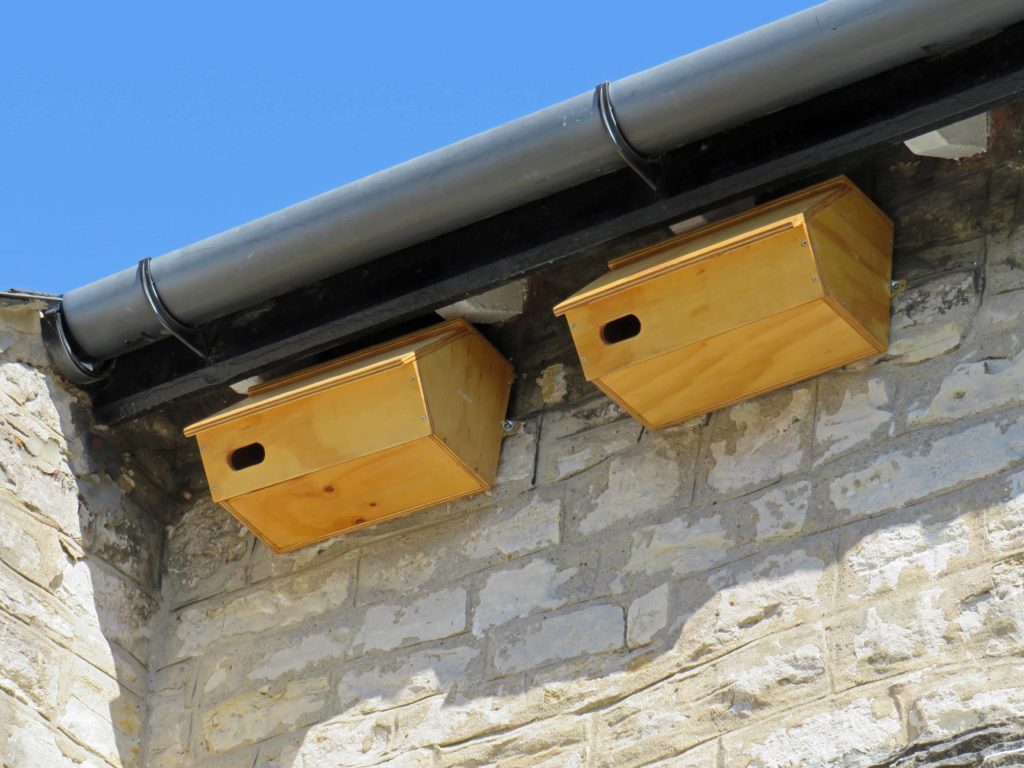
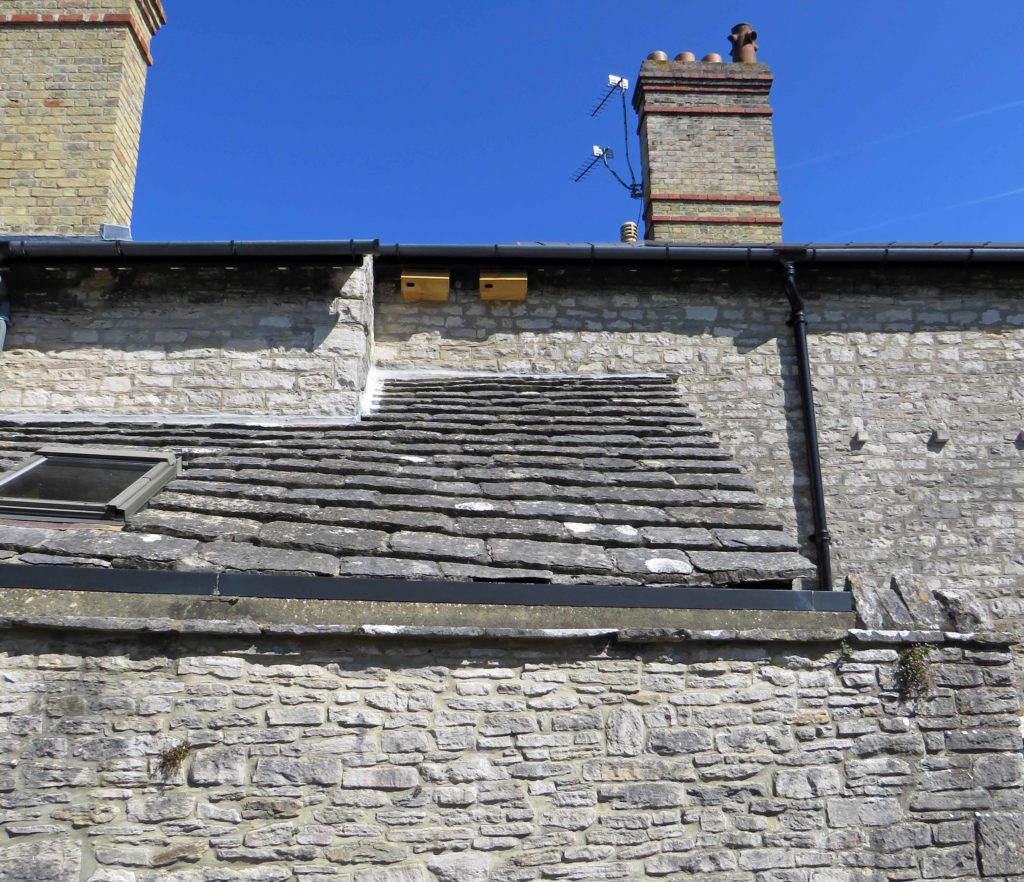
These swift nest boxes were handmade by local resident Derek Keller and positioned in the town hall area of Swanage to help boost the number of nests
Wooden swift nesting boxes
While swifts like to nest in old wooden eaves of houses, it doesn’t mean that homeowners can’t update their properties as there are several ways to continue to allow swifts to breed.
Swift Conservation says that if homeowners are aware they have swifts nesting, they should avoid doing work on their roof during the breeding season, which is from the end of April to August.
When replacing a roof or soffit boards, gaps can be left or small holes cut in the plastic to allow swifts to return next year to the same location. Alternatively, wooden swift boxes can be positioned under the eaves.
Most homeowners don’t even realise they have swifts nesting as they cause little disturbance, so they rarely cause a problem.
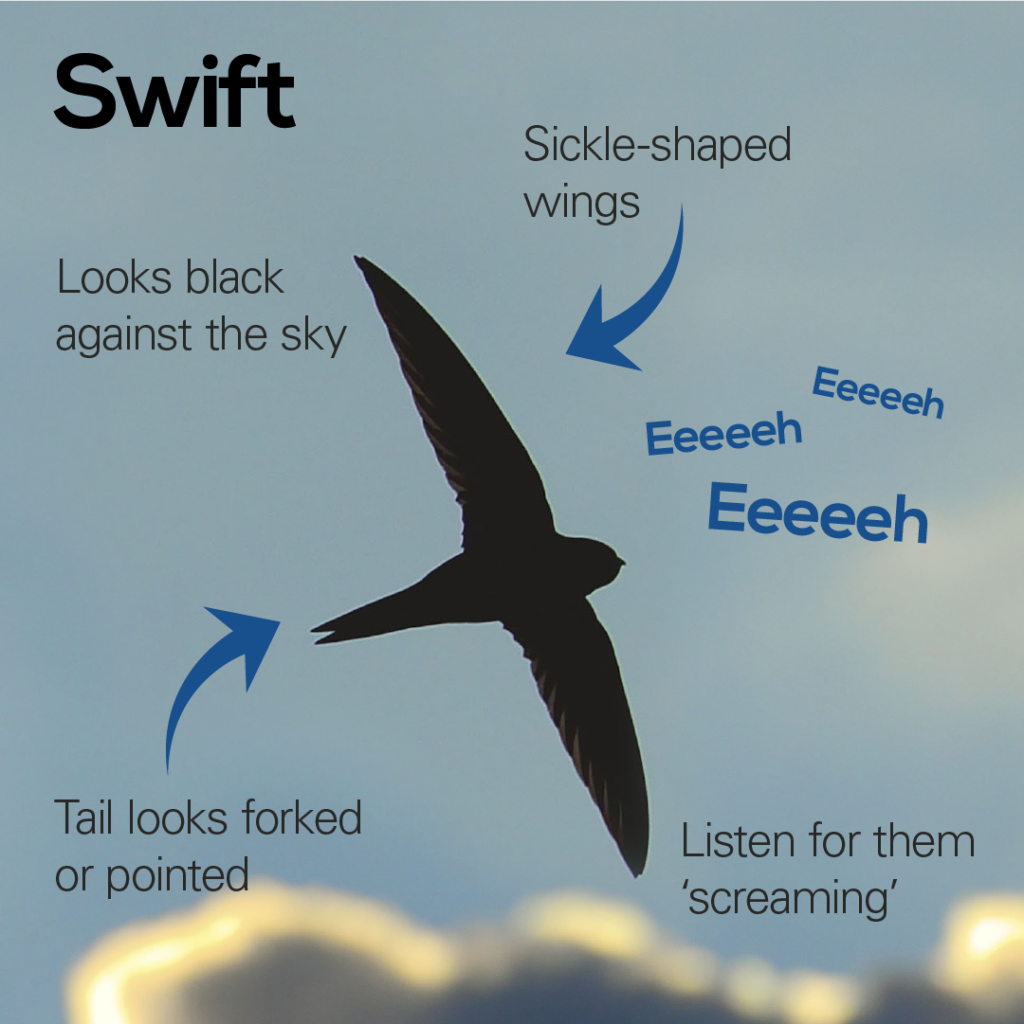
How to identify a swift
“A form of flying pest control”
In fact, Ginny added:
“Swifts make a real positive contribution to our town. In parts of Spain and Italy, they watch to see the swifts return and then say they can go out as the swifts will be reducing the number of biting insects – they are a form of flying pest control.
“They are a crucial part of our ecosystem and the sound of summer. They are iconic birds, so distinct as the circle in the sky – we really don’t want to lose them!”
Further information
- The next Swanage swift walk will start at 7.15 pm on Tuesday 31st May 2022, by the old jail behind Swanage Town Hall in the High Street. Anyone who is interested is invited to just turn up.
- More about swifts is on the Swift Conservation website
